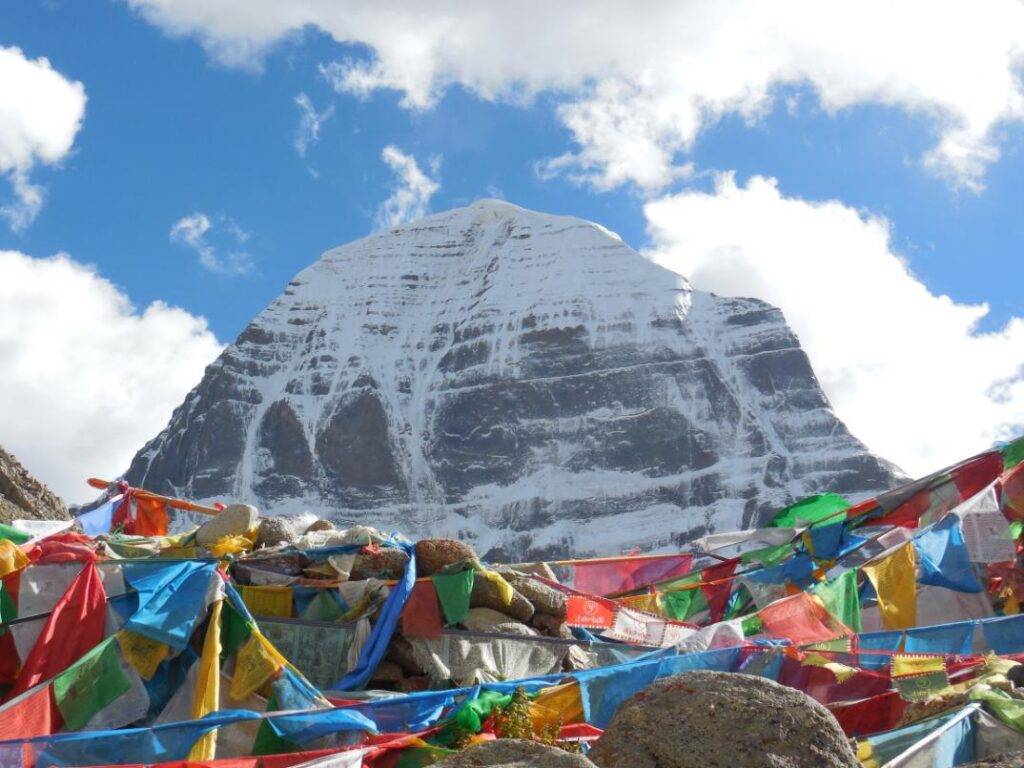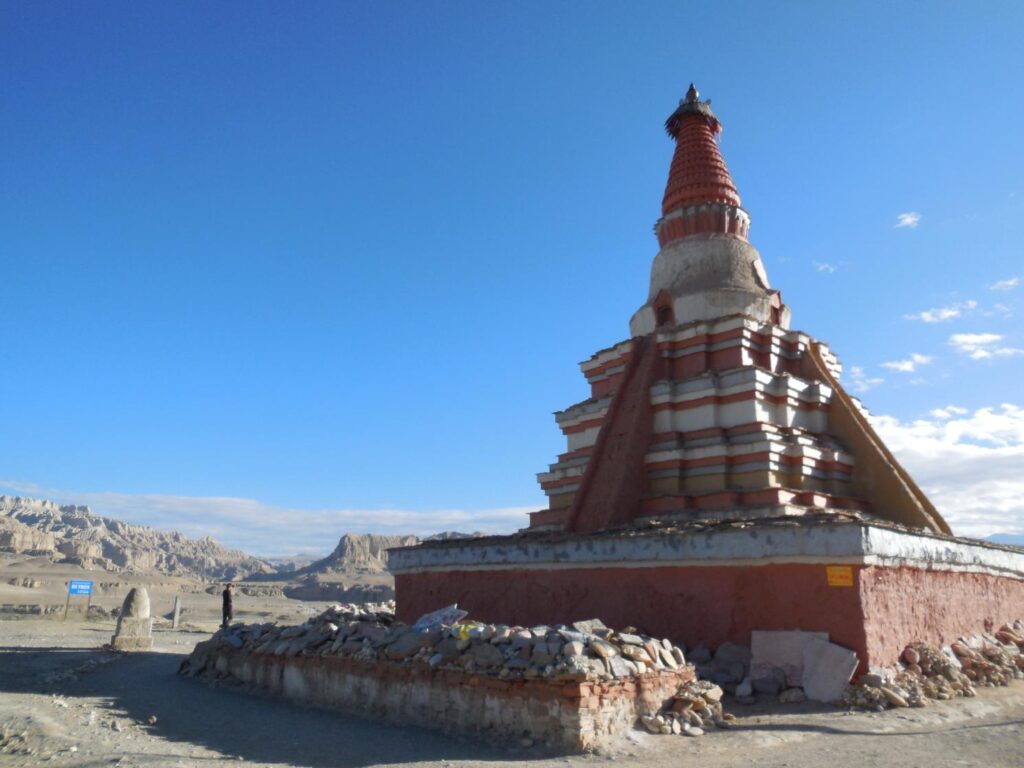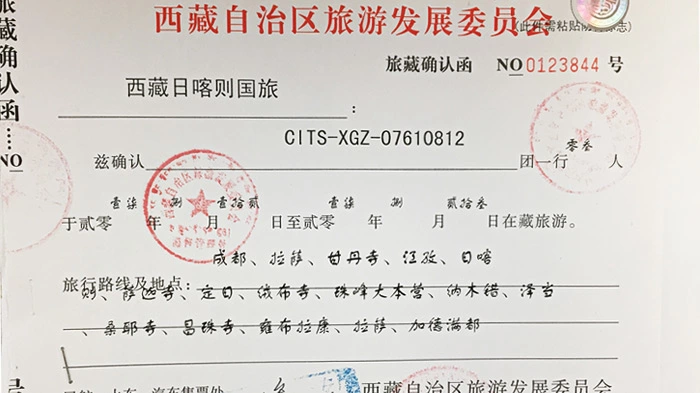Introduction to Kailash Mansarovar Yatra
Kailash Mansarovar Yatra is a spiritual attempt of the highest value. On the rocky plateau of Tibet, Mount Kailash is sacred to Hindus, Buddhists, Jains and Bonpos as the holiest mountain. In this article, we will learn a comprehensive guide to Kailash Mansarovar Yatra from UK, Australia, Malaysia, USA and Canada.
At Mount Kailash, a 6,638 m high mountain, and Mansarovar Lake, a clear and pristine freshwater lake, the pilgrims arrive through pilgrimage.
Mount Kailash Yatra is believed to be lord Shiva’s earthly abode for pilgrims, and it is thus a sacred site of worship and meditative concentration. It is also possible to state that Yatra provides a distinctive spiritual experience that blends spiritual, natural, scenic and culturally diverse elements.
Importance of Kailash Mansarovar Yatra
Kailash Mansarovar has immense spiritual, religious, and cultural value. Mount Kailash is the cosmic area for the Hindus, regarded as the residence of Lord Shiva and Goddess Parvati.
For Buddhists, it is the axis of the world and a percept of the world. They are supposed to be the site where the first Tirthankara Rishabhadeva attained Moksha. To good pious, they regard it to be a sacred peak, their thanks to the ancestral piety.

Mansarovar Lake, near Mount Kailash, is equally sacred. It is said that drinking its pure water has the spiritual purifying and mental clarifying effect. Pilgrims are allowed to take a dip in the lake or also bring away a portion of the lake water back home as a gift.
But for another purpose not religious, pilgrimage is beneficial in terms of therapeutic effects, such as improvement of internal, mental and spiritual potentials, as well as the strength of conviction.
The cultural exchanges across stages add to the overall journey experience and are also a rich spiritual experience for the people who undertake this pilgrimage.
So stay with us for a comprehensive guide to Kailash Mansarovar Yatra from the UK, Australia, Malaysia, USA and Canada.
Guide to Kailash Mansarovar Yatra from the UK
The Kailash Mansarovar Yatra is a pilgrimage of rebirth and transcendental renewal, and if it is to be carried out in the UK, it will need planning, there will be information and so on.
This is a detailed guide to help UK pilgrims plan this holy pilgrimage smoothly.
Travel Routes to Kailash Mansarovar from the UK
The usual pathway for UK travel is through Nepal/India. Flights to Kathmandu, Nepal, are available between popular UK airlines (e.g., London Heathrow, Manchester) and arrival locations. Flights typically have intermediate stops in the Middle East (e.g., Doha/Qatar Airways, Dubai/Emirates).
From Kathmandu, it is possible to fly directly to Lhasa, Tibet, or the border between Nepal and China. An alternative is to fly out of that location to New Delhi, India under which if one prefers one can fly out through the Uttarakhand route or fly out to Nepal by air.
But since the Uttarakhand route is not open so you must travel from Nepal. Both tracks end in the Tibetan plateau and the terrain takes them to the Kailash Mansarovar.
Visa and Permits for UK Pilgrims for Kailash yatra 2025
It is necessary to have a Chinese visa to go to Tibet for Kailash Mansarovar. In addition, a “Tibet Travel Permit” (TP) must be obtained for Kailash Mansarovar as Kailash Mansarovar region is a restricted area. The permit must be obtained by the resgistered trekking agency.
Transiting through Nepal necessitates a Nepali visa. It is given upon arrival or can be ordered upon arrival in front of Tribhuvan International Airport, Kathmandu or in advance.
Flights and Transit Information from the UK to Nepal
Flights from the UK are on average around 12–14 h (with layover in between). Popular transit cities include Doha, Dubai, and Istanbul. Where, you can land at Kathmandu (1.5-hour air domestic flight) in Kathmandu itself for this route, to Lhasa (Tibet) or Simikot (western Nepal).
Flights from the UK to New Delhi via India last about nine hours. Travel agencies are often involved in organizing internal flights and transfers and ensuring journeys run smoothly.
Guide to Kailash Mansarovar Yatra from Australia
The Kailash Mansarovar Yatra is a significantly sacred activity, with spiritual travelers from every corner of the earth, such as Australians, undertaking the pilgrimage.

When attempting to adopt the best arrangements and knowledge of mode of travel route, visa or cost, then the travel should be confirmed. Here’s a detailed guide for pilgrims from Australia.
Travel Routes to Kailash Mansarovar from Australia
The oldest way for Australian pilgrims to travel from the West is to travel through Nepal or India. Flights are all available from Australia’s major airports, such as Sydney, Melbourne or Brisbane, to Kathmandu, Nepal. Air travel can be flown via hub cities (e.g., Singapore, Kuala Lumpur, or Bangkok) with layovers.
From Kathmandu, pilgrims have two options: Fly to Lhasa, Tibet or by road to Nepal-China border and then by road. Alternatively, it is also possible to fly from Australia to the New Delhi, India and then, travel along the pilgrimage track.
Visa and Permits for Australian Pilgrims
Australian citizens are obliged to apply for a Chinese visa to travel to Tibet as Kailash Mansarovar is located in Chinese territory (i.e., a Tibet Travel Permit is also needed, which can only be purchased through the registered travel agency. Pilgrims cannot apply for this permit directly.
If travelling via Nepal, a Nepali visa is mandatory. It is available on the spot upon arrival at Tribhuwan International Airport in Kathmandu or can be obtained prior to leaving online. The applicant’s passport should be not less than six months from the date of travel.
Flights and Transit Information from Australia to Nepal
Airings from Australia to Kathmandu generally take 14–16 hours with a layover. Popular transit cities include Singapore, Kuala Lumpur, and Bangkok. However, by an alternate route, it is possible to travel from Kathmandu or Simikot by short flight.
Travel by India board (flights) from Australia is commonly 12–15 hours, with transit through Singapore or Kuala Lumpur.
Guide to Kailash Mansarovar Yatra from Malaysia
Kailash Mansarovar Yatra is a great pilgrimage, and Malaysian people throng there in sizable numbers. Fortunately, it is crucial, as it requires planning for aspects such as air travel, visas, permissions, etc. Below is a detailed guide for Malaysian pilgrims for Kailash Mansarovar Trek.
Travel Routes to Kailash Mansarovar from Malaysia
Malaysian tourists normally follow Nepal or India as the standard. For example, flight departures from some of the major airports, such as Kuala Lumpur or Penang, to Kathmandu, Nepal). Flights often involve transit city stops in cities like Singapore, Bangkok, or Doha.
Instead If one would like to go straight to Kailash Mansarovar, one can fly to Lhasa, Tibet, or drive, to the Nepal-China border and go on with your trek.
Visa and Permits for Malaysian Pilgrims for Kailash Mansarovar Yatra
The nationality criteria that Malaysian visitors must meet are: they must have a Chinese visa and a Tibet Travel Permit to access Tibet.

When visiting Nepal, you will be granted permission to enter the country with a Nepalese visa. This is on offer on arrival at Kathmandus’ Tribhuvan International Airport or can be procured in advance before travelling to Kathmandu.
It should be emphasized, however, that your passport must be valid for at least 6 months prior to or during the visit.
Flights and Transit Information from Malaysia to Nepal
Flight to Kathmandu is typically 6–7 hours from Malaysia, with one stopover at stations such as Singapore, Kuala Lumpur or Doha. Once in Kathmandu, all passengers can fly domestically to either Lhasa or Simikot, depending on the travel program.
Guide to Kailash Mansarovar Yatra from the USA and Canada
The USA and Canadian pilgrims’ participation in Kailash Mansarovar Yatra is not only a challenging one, it is also a rewarding activity for them.
For starters, making itineraries, such as gaining the necessary visas and permits, scheduling flights, etc., are also very crucial for a pilgrimage to have a good start.
Below is a detailed guide for American and Canadian travellers.
Travel Routes to Kailash Mansarovar from the USA and Canada
The most common mode of arrival for USA visitors is Nepal or India. Air travel from a. The nearest major airport to NY or LA or SF in Doha Dubai Istanbul is generally over before reaching Kathmandu. They can fly, then come to Lhasa, Tibet or go by ground to the Tibet-Nepal borderline.
Visa and Permits for USA and Canadian Pilgrims
However, everyone has to get their Chinese visas and Tibet travel permits if they are an American wishing to climb Kailash Mansarovar. The Tibet Travel Permit is managed in the sense that, although the purchase, and therefore application, of the Tibet Travel Permit can actually be done directly, the actual application can only be made after registration with a Travel Agent Company.
If one is planning to travel to Nepal, it is mandatory to secure a Nepalese visa, which may be had at the airport on arrival or otherwise can be had in advance from the Tribhuvan International Airport (T.I.A) Kathmandu. It is recommended that your passport be valid no less than six months before the date of travel planned.
Flight and Transits point from USA to Nepal
Currently, the duration of a flight from the USA to Kathmandu is approximately 18-22 hours with at least one airline stopover at Doha, Dubai or Istanbul. When reaching Kathmandu, a domestic short haul flight is conducted to Lhasa or Simikot depending on your plans.
The flight time of travelling to New Delhi from the USA is 14 to 16 hours in case you decide to fly to India.
Cost for Kailash Mansarovar Yatra 2025/2026
The cost for the Kailash Mansarovar Yatra is USD 2,650 per person which includes most of the expenses including the transport, meal, accommodation, permits and guide charges.
But the citizens of USA and Canada are required to pay an extra USD 90 as visa fees making this batch slightly more costly.
This amount is inclusive of the Chinese visa and Tibet Travel Permit for managing to get to Kailash Mansarovar since it is an area that is restricted in tibet.
Additionally, it is necessary to check with your travel operator about these charges because other charges may be added due to changes in visa policies or other services included in the package.
Planning Your Kailash Trip
Health Considerations
Kailash Mansarovar Yatra is a highly demanding pilgrimage at an unfriendly high altitude and in hostile weather conditions.
The presence of acute mountain sickness signs and symptoms should also be considered. To decrease the risk, it is suggested that pilgrims spend a minimum of a couple of days acclimatizing in Kathmandu or Lhasa before undertaking the trek.
Possible health aspects to be taken into account are adequate hydration, carrying adequate medications, and being able to deal with the prospect of an absence of medical structures and services in remote areas.
Purchasing travel insurance with medical/outpatient benefits and emergency evacuation benefits is highly recommended.
It is recommended to go see a doctor before traveling to get this treatment. Vaccines, for example, against hepatitis e, might later be used, depending on the state of health and the necessity to travel, if needed.
Physical Preparation
Physical work remains crucial to the success of the Kailash Mansarovar Yatra. Although the pilgrimage will take several days of walking with feet and hands, some of which will be on the higher levels of walking, it is not a necessary degree of fitness for one.
At least 2-3 months before the start of your trip, one should engage in repeated and high-intensity resistance and aerobic exercises. Giant cardiovascular training, such as walking, running or trekking, is suitable for long chain endurance training.
Adaptation to high altitudes can also be brought about by exercise at low altitudes and repeated distance increases, which may be achieved during high-altitude hikes.
If, for instance, a person decides to take part in (circumambulation) parikrama of Mount Kailash, which is walking for several days, it is advised that one practice walking on uneven and rough trails.
Furthermore, stretching and flexibility exercises are going to be used in order to decrease the risk of injury during travel.
Travel Routes to Kailash Mansarovar
Because there are several different paths to choose along the Kailash Mansarovar Yatra depending on the speed, comfort and experience level and the expertise level, there are several different potential paths.
Overland Route via Kyirong
The Kyirong land route is one of the most travelled routes in Kailash Mansarovar. By road, Kathmandu transports the user to the Nepal-China frontier in Kyirong, a Tibetan frontier.
It is a breathtaking scenic adventure with views of the Himalayas and it thread rolls through towns/villages and you are given the opportunity to experience Nepalese/Tibetan landscape and culture.
You will cross the border and go up among the high-altitude landscapes in Tibet. This way, you will be able to slowly acclimatize over time while doing yoga.
From Kyirong to Mansarovar Lake and then to Kailash for the sacred parikrama pilgrimage (circumambulation). It’s a less direct route, but the actual route forms the most direct experience for the Tibetan plateau and the region around it.
Mansarovar Helicopter Route
The Kailash helicopter route is the most direct route to Kailash Mansarovar, it is much shorter in travelling time. This trail starts with an aerial from Kathmandu to Simikot in the western part of Nepal.
Each one lands by helicopter straight over to the vicinity of Mansarovar Lake or a little bit further to Mount Kailash (or something), again, as per the program. The helicopter flight path is especially highly praised by tourists who have limited time and do not wish to take the arduous ground path.
Although it is more costly than the usual route, the helicopter route can offer a thrilling overview of the Himalayas scene and has the advantage of mobility.
Via Lhasa
An alternative route, via Lhasa/Tibet, to Kailash Mansarovar. By road or air from Kathmandu, it is possible to fly or drive to Lhasa (the capital of Tibet).
Lhasa is cultural capital and religious center of Tibet, containing temples, namely Jokhang Temple, and Potala Palace. This programme has a slow walking rate, and there are several days of acclimatizing in Lhasa, then Kailash is visited.
Either by air from Lhasa instead of the other way around or by road from Lhasa to either the Mansarovar Lake or both.
This Kailash yatra itinerary is also, somewhat, more time consuming and expense, however, it delivers a richer experience of Tibetan culture and history. Lhasa serves as the end point of the altitude acclimatization process of the Yatra before the physical workload begins.
Packing Essentials for Mansarovar Yatra
However, along this road to Kailash-Mansarovar Yatra, its high altitude and trekking characteristics along the pilgrimage path should not be underestimated.
Here’s a list of essential items to bring:
- Clothing
- Footwear
- Medication
- Water Bottle
- Sunglasses, sunscreen, and SPF lip balm
- Camera
- Travel Documents
- Permits for the tour
Send an Enquiry
Error: Contact form not found.
© 2025 - Himalayan Trekking and Tours (P) Ltd. All Rights Reserved.

